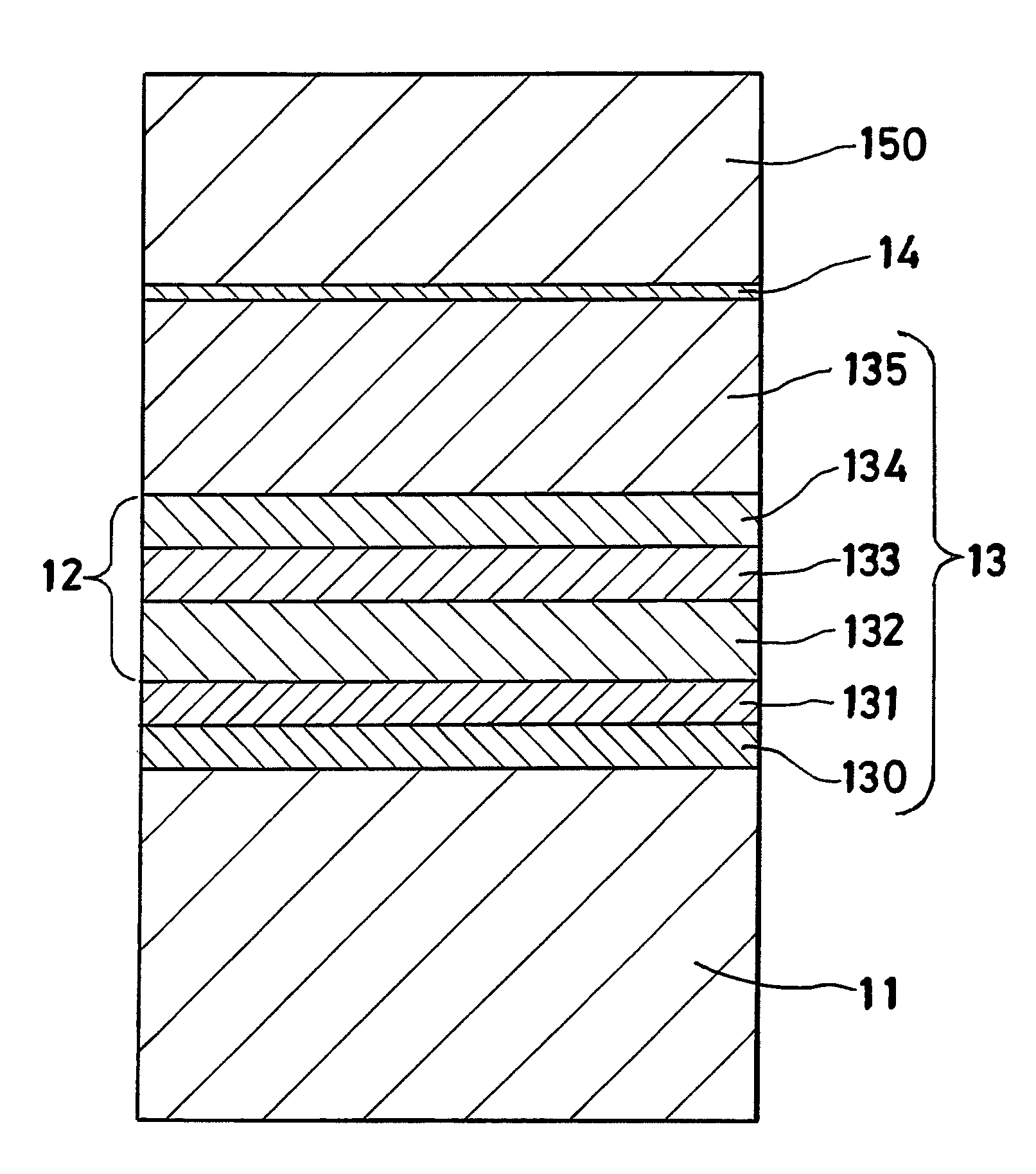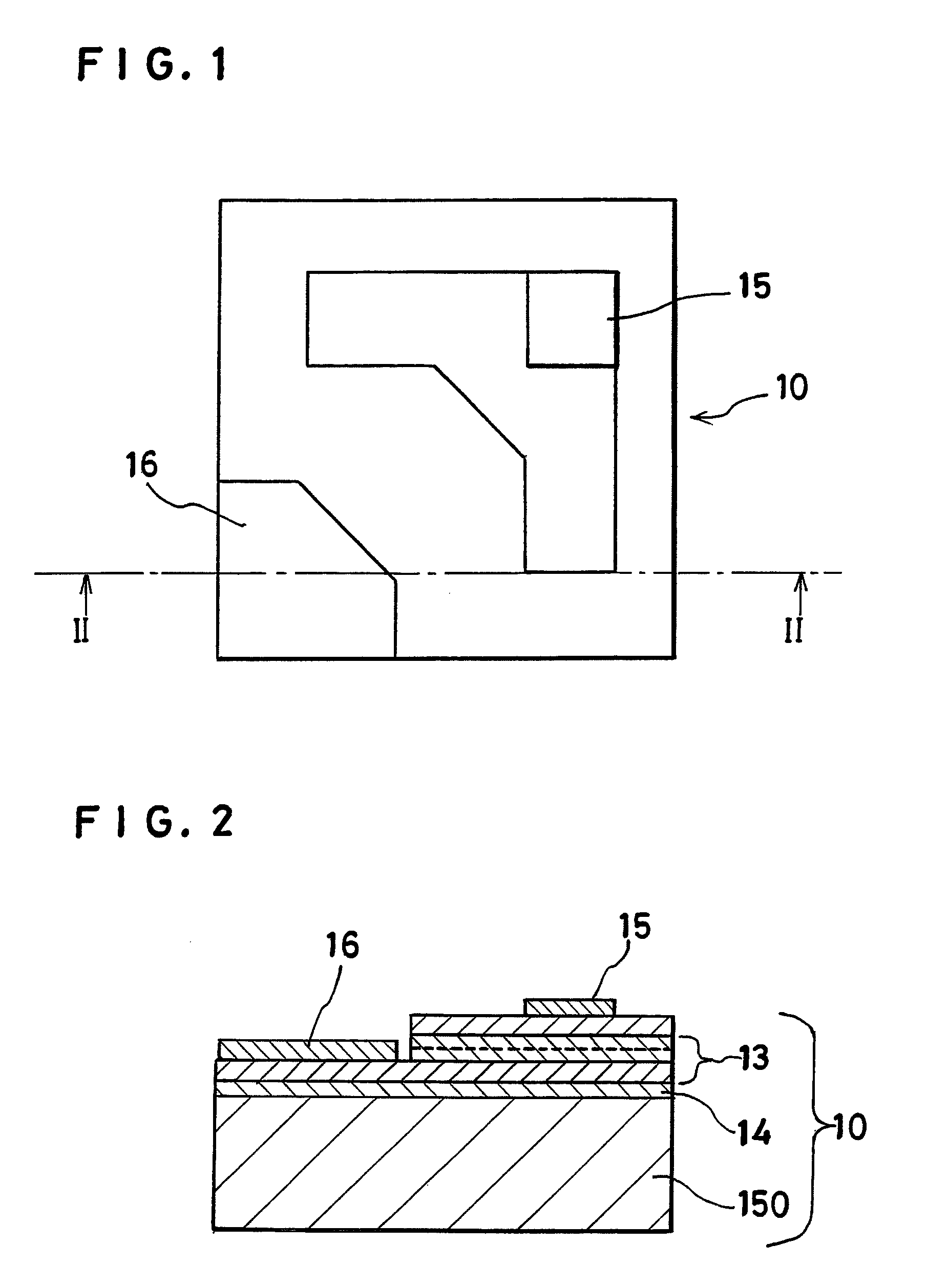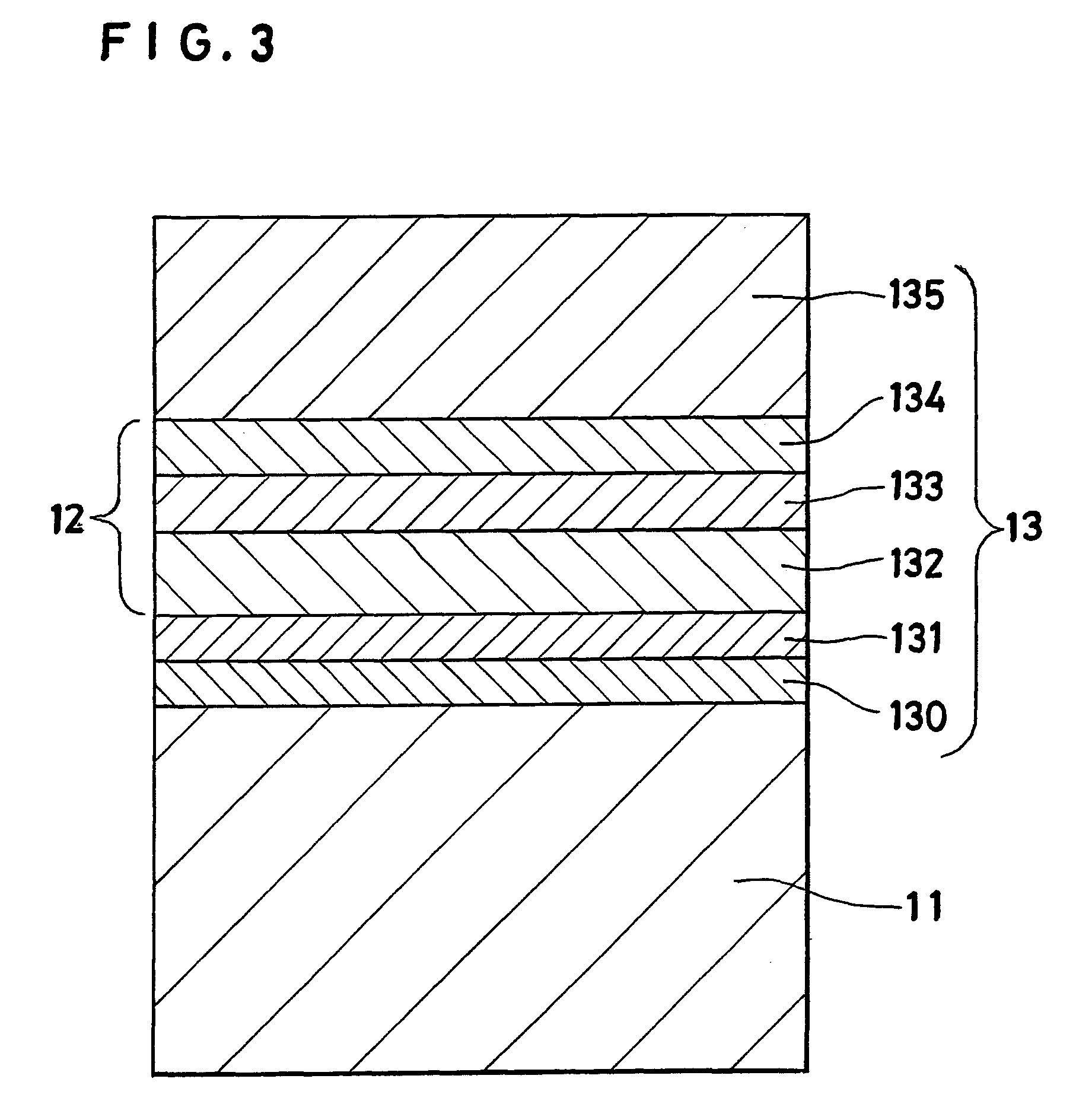Light-emitting diode and method for fabrication thereof
a technology of light-emitting diodes and fabrication methods, which is applied in the direction of basic electric elements, electrical equipment, and semiconductor devices, can solve the problems of inability to manufacture leds, complicated assembling circuit techniques, and unfavorable light-emitting devices, so as to enhance the efficiency of light extraction, reduce yield, and enhance resistance to voltage accidentally applied
- Summary
- Abstract
- Description
- Claims
- Application Information
AI Technical Summary
Benefits of technology
Problems solved by technology
Method used
Image
Examples
example 1
[0094]This example specifically explains an example of fabricating a light-emitting diode contemplated by this invention.
[0095]FIG. 1 and FIG. 2 are diagrams illustrating a semiconductor light-emitting diode that was fabricated in the present example; FIG. 1 representing a plan view thereof and FIG. 2 a cross section taken through FIG. 1 along line II-II. FIG. 3 is a cross section of the layer structure of a semiconductor epitaxial wafer used for the semiconductor diode.
[0096]A semiconductor light-emitting diode 10 fabricated in the present example was a red light-emitting diode (LED) possessing an AlGaInP light-emitting part.
[0097]In this LED, on a semiconductor substrate 11 formed of an Si-doped n-type GaAs single crystal possessing a surface inclined by 15° from the (100), there is formed a semiconductor layer 13 resulting from sequentially stacking a buffer layer 130 formed of a Te-doped n-type GaAs, a contact layer 131 formed of a Te-doped n-type (Al0.5Ga0.5)0.5In0.5P, a lower ...
example 2
[0117]This experiment was performed by following the process of the preceding example while having the electric conductor formed of an n-type SiC having the surface polished to a thickness of 0.1 mm. The amorphous layer had a thickness of about 1 nm.
[0118]The resultant device emitted a light in red color having a main wavelength of 620 nm when the electric current was fed to the p-electrode terminal and the n-electrode terminal. The intensity of light emission at this time was such high luminance as 520 mcd. The forward voltage (Vf: at 20 mA) during the flow of an electric current of 20 mA in the forward direction was about 2.1 V, a fact that reflected good ohmic characteristics of the electrodes.
[0119]In this example, the magnitudes V1=1.5 V, V2=39 V and V3=6 V satisfied the relation of 0.5×V2>V3>2×V1.
[0120]When 30 of the produced lamps were randomly selected as samples and tested for electrostatic breakdown voltage, none of them sustained any breakdown at 100 pF, 1.5 kΩ and 5000 V...
example 3
[0124]This experiment was performed by following the process of Example 1 cited above while having the electric conductor formed of a Zn-doped p-type GaP having a carrier concentration of 9×1018 cm−3. The resultant device, when the electric current was fed to the p-electrode terminal and the n-electrode terminal, emitted a light in red color having a main wavelength of 620 nm. The forward voltage (Vf: at 20 mA) during the flow of an electric current of 20 mA in the forward direction was about 2.1 V, a fact that reflected good ohmic characteristics of the electrodes. The forward voltage (Vf: at 10 μA) was about 1.5 V and the reverse voltage (Vr: at 10 μA) was about 4.5 V. The intensity of light emission at this time was high luminance of 450 mcd. When 30 of the produced lamps were randomly selected as samples and tested for electrostatic breakdown voltage, no breakdown was detected at 100 pF, 1.5 kΩ and 5000 V.
[0125]The reverse voltage (V2: at 10 μA) of the light-emitting part was ab...
PUM
 Login to View More
Login to View More Abstract
Description
Claims
Application Information
 Login to View More
Login to View More - R&D
- Intellectual Property
- Life Sciences
- Materials
- Tech Scout
- Unparalleled Data Quality
- Higher Quality Content
- 60% Fewer Hallucinations
Browse by: Latest US Patents, China's latest patents, Technical Efficacy Thesaurus, Application Domain, Technology Topic, Popular Technical Reports.
© 2025 PatSnap. All rights reserved.Legal|Privacy policy|Modern Slavery Act Transparency Statement|Sitemap|About US| Contact US: help@patsnap.com



